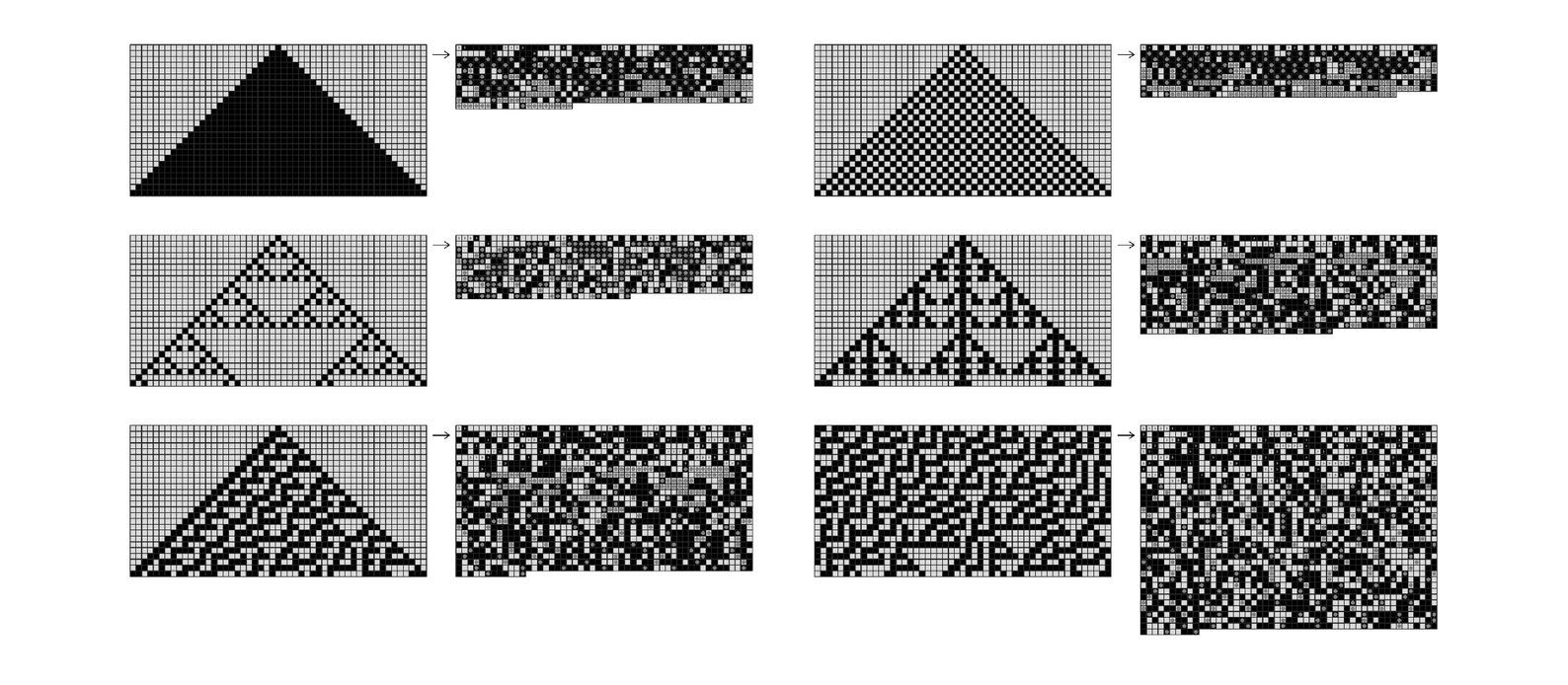When a larger number of distinct blocks occur, longer codewords must inevitably be used. But compression can still be achieved if the codewords for common blocks are sufficiently much shorter than the blocks themselves.
One simple strategy for assigning codewords is to number all distinct blocks in order of decreasing frequency, and then just to use the resulting numbers—given, say, in one of the representations discussed above—as the codewords. But if one takes into account the actual frequencies of different blocks, as well as their ranking, then it turns out that there are better ways to assign codewords.
The pictures below show examples based on a method known as Huffman coding. In each case the first part of the output specifies which blocks are to be represented by which codewords, and then the remainder of the output gives the actual succession of codewords that correspond to the blocks appearing in the data. And as the pictures below illustrate, whenever there are fairly few distinct blocks that occur with high frequency, substantial compression is achieved.

Huffman encoding with blocks of length 6 applied to patterns produced by cellular automata. The maximum possible compression is by a factor of 6; the maximum achieved here is roughly a factor of 3. The difference between the size of the results for the last two examples is mostly a consequence of the presence of large areas of white in the first of them.



